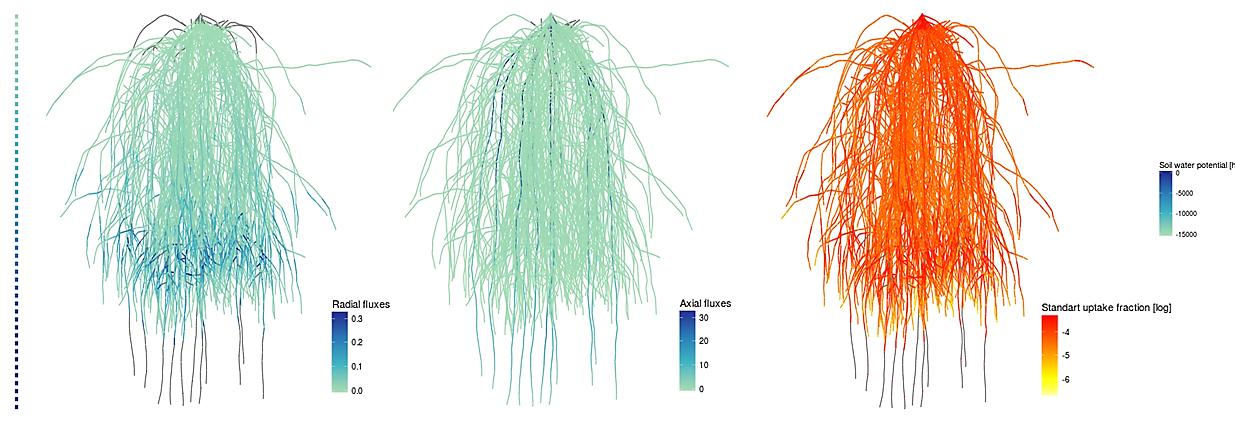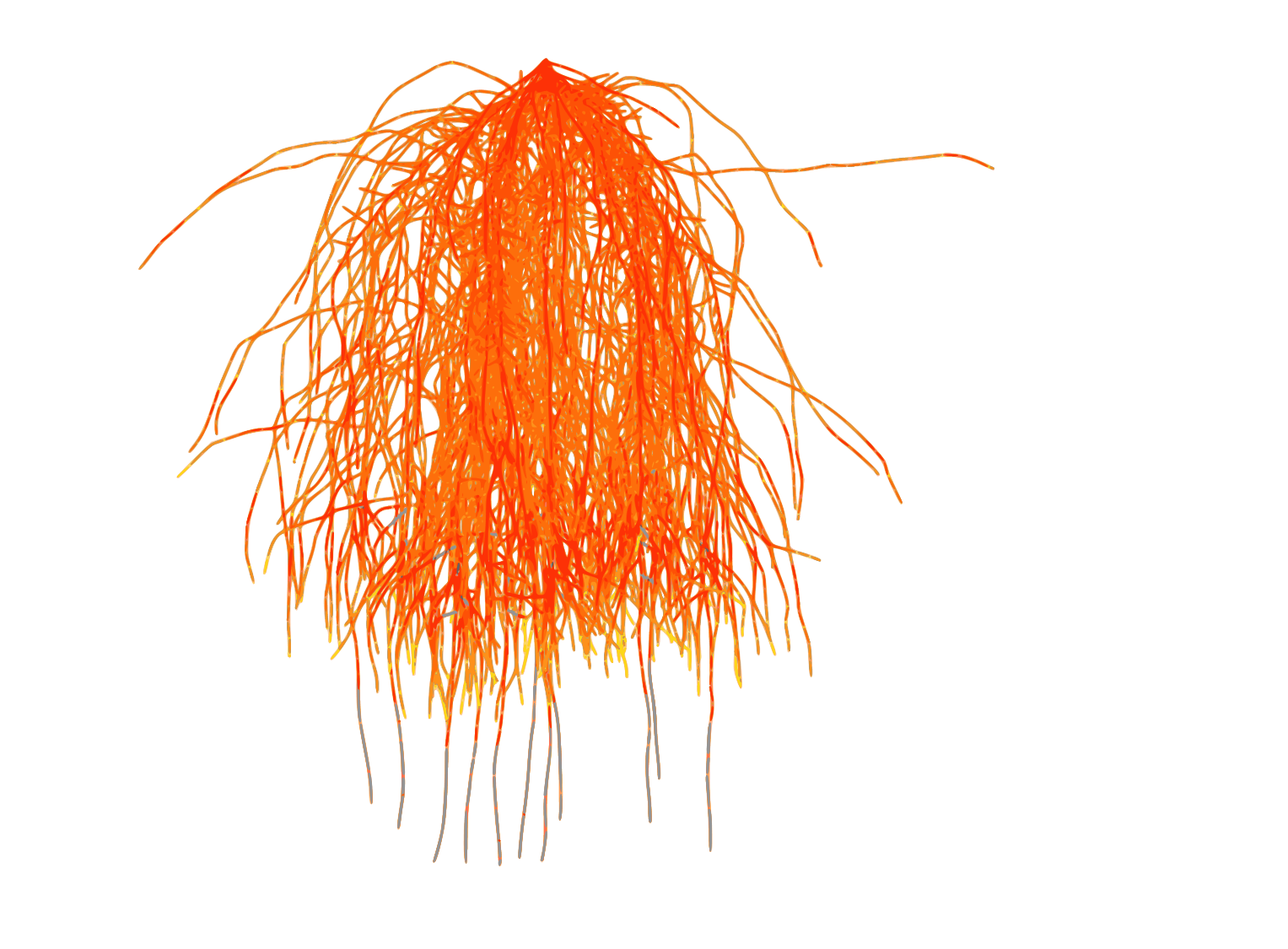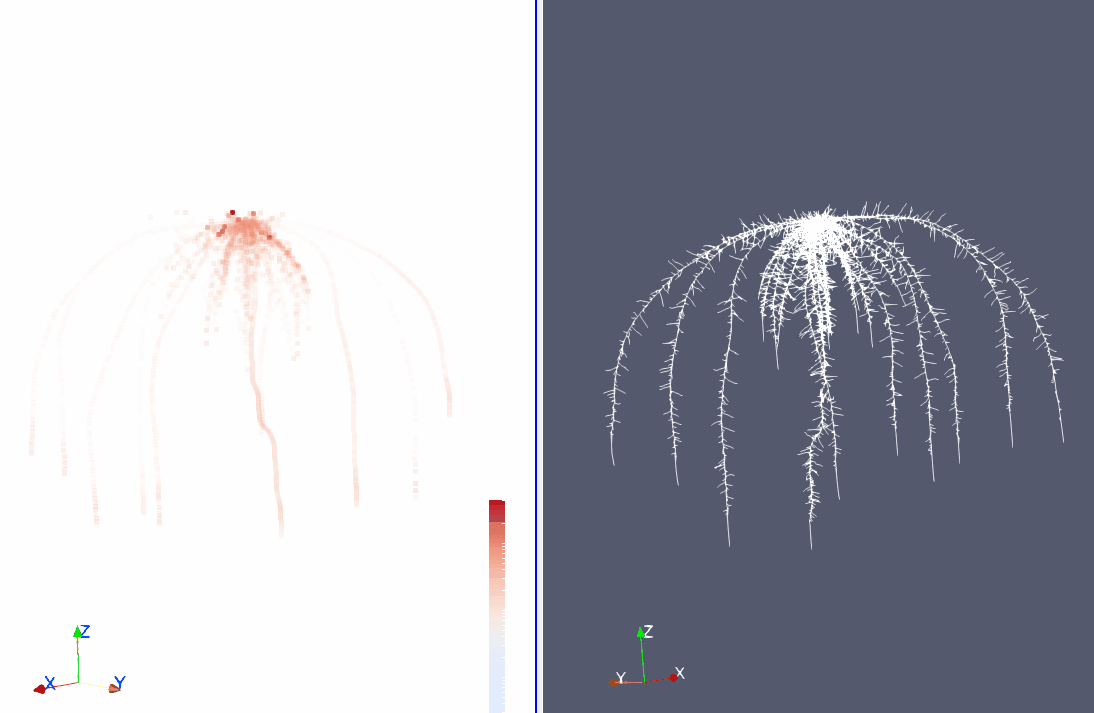


MARSHAL is a maize root system hydraulic architecture solver that combines the root architecture model CRootBox (Schnepf et al. 2018) with the method for solving water flow in RSHA of Meunier et al. (2017) and with the method for computing macroscopic parameter of Couvreur et al. (2012).
The model computes water flow at the level of root segments, quantifies the contribution of the water flows of each of the root segments, and predicts the whole conductivity of the root system (Krs) [cm3.hPa-1.d-1] and the potential transpiration, as well as the actual one [cm3 d-1].
MARSHAL was coded in R, and is therefore platform independant. It can be run on Windows, Linux and MacOS
The first step before running MARSHAL is to install a working version for R. Installation of R are available here: https://cran.r-project.org/
The source code of MARSHAL is available on github: https://github.com/MARSHAL-ROOT/marshal
The fast way is to write down the following lines in your R environment.
install.packages("devtools")
library(devtools)
install_github("MARSHAL-ROOT/marshal")
library(marshal)
MARSHAL is built upon a handfull of external libraries. You will need to install them before using the solver.
data.tabletidyverseMatrixreadxlOnce you have install all the packages
You do not need your own data to try it out.
To run MARSHAL in the R environment, one easy way is to look at the illustration pipeline.
It allows you to:
The SUF in 3D !

MARSHAL uses four input files:
MARSHAL output comes out in a list of elements:
MARSHAL was developed at the Université catholique de Louvain, in the Earth and Life Insititute, in the lab of Mathieu Javaux. The primary developpers of the model are Félicien Meunier, Adrien Heymans, Xavier Draye, Valentin Couvreur, Guillaume Lobet, and Mathieu Javaux.
MARSHAL article is available:
MARSHAL, a novel tool for virtual phenotyping of maize root system hydraulic architectures Félicien Meunier, Adrien Heymans, Xavier Draye, Valentin Couvreur, Mathieu Javaux, Guillaume Lobet
in silico Plants, 2019

